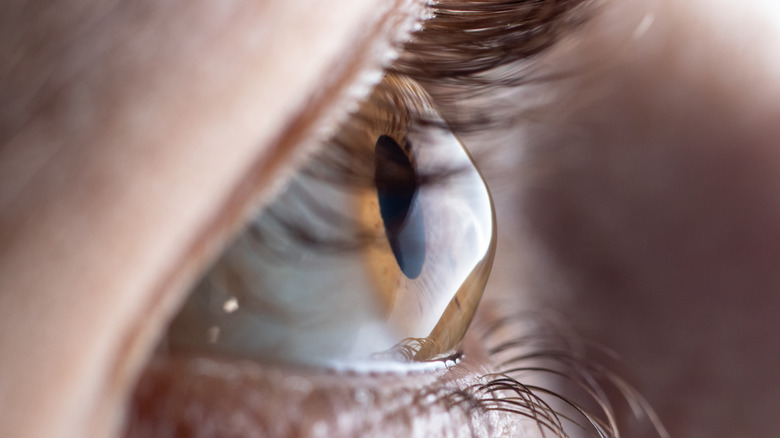Why You Should Think Twice About Wearing Colored Contact Lenses
Most people have one (or a few things) that they want to change about themselves. Some changes involve weight loss or reshaping part of their body, the sort of cosmetic alterations that require a doctor's help and can cost thousands upon thousands of dollars. Other changes are easier to pull off, usually with the help of some hair dye or a set of extensions. These are a little more common since they don't require a doctor's appointment.
But there is one cosmetic alteration that falls somewhere between the two. Colored contact lenses seem like the perfect way to dramatically change your look for a relatively low cost. And sure, it's recommended that you get them through your ophthalmologist, but they're readily available online, too. And if you're gearing up for a convention or planning your most epic Halloween costume yet, they're all but a must-have accessory.
Easy access and affordable prices for such a versatile option seems almost too good to be true. In the case of prescription-free contacts ordered online, it is. They can be hard to see through and uncomfortable. And, in some cases, they can be dangerous.
Short term fun, long term damage
Despite what some retailers claim, there is no such thing as a 'one size fits all' contact. The American Academy of Ophthalmology (AAO) is very clear on that point. Without proper fitting, contacts of any kind can scratch or cut your eyeball. And once that happens, it's all too easy to develop infections. And if that infection is keratitis, or infection of the cornea, it could lead to permanent blindness (AAO).
The AAO specifically mentions one teenager who purchased color contacts from a vendor that did not require a prescription. The young man just wanted to try a different eye color. But three years after using the contacts, he is now legally blind in one eye.
Selling contacts without requiring a prescription is illegal in the United States. Contacts are technically medical devices and the prescription for them covers more than the strength of the lenses. It also covers fitting the lens to the shape of a person's eye. As Alanna Nattis, D.O., FAAO said when speaking to Catholic Health's Good Samaritan Hospital, you should always have a proper eye exam in ordered to be fitted correctly for contact lens.
It is something Dr. Nattis and the AAO agree on. If you absolutely want costume contacts, make an appointment with an ophthalmologist and only order through sources that require a prescription. And ensure that the site requires a full prescription, not just the 'strength' for each eye. Anything less and you're risking discomfort, injury, and blindness.


